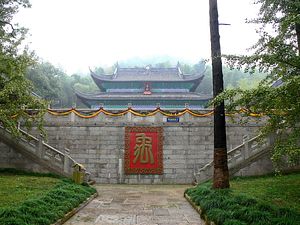This is an exciting year for archaeology in Asia! As I have discussed earlier, new discoveries have transformed our understanding of the Indus Valley Civilization (IVC). Now, new research presented in Science has shed new light on the origins of Chinese civilization.
Chinese historiography generally presents Chinese history through the lens of various dynasties. The earliest historically attested dynasty is the Shang Dynasty, which arose around 1600 B.C.E. However, traditional Chinese histories speak of a Xia Dynasty that existed before the Shang. Many modern scholars, both Western and Chinese, have questioned the existence of the Xia, noting that many of the characteristics associated with Xia Dynasty are merely the opposite of the Shang, thus leading to the belief that the Xia were created as a sort of foil for the Shang. Nonetheless, whether or not there were dynasties and states, there is evidence of agriculture and advanced social organization in China going back several thousands of years before the Shang.
According to traditional Chinese histories, “sometime between 2200 B.C.E. and 2000 B.C.E., … a legendary hero named Yu tamed Yellow River flooding and earned a mandate to become the founding emperor of the Xia dynasty, the country’s first.”
Now, new research indicates there is truth to this ancient story. The paper in Science is the culmination of over ten years of research from “the fields of archaeology, anthropology, seismology, and geology.” The research indicates that the Yellow River did indeed flood, though somewhat later than the traditional starting date of the Xia Dynasty, 2070 B.C.E. According to researchers, the flood occurred around 1920 B.C.E.
Whoever managed to bring the flood under control–the man traditionally known as Yu–probably oversaw irrigation and digging work that allowed water to be guided back into its proper channels. According to the study, restoring order after the chaos earned “him the divine mandate to establish the Xia dynasty, the first in Chinese history.”
According to the findings of the research, the flood occurred when a vast landslide, the result of an earthquake, blocked the Yellow River in Qinghai province (near Tibet). This lead to the formation of a lake behind the blocked river; eventually the natural dam was breached, leading to a flood downstream, where the ancestors of today’s Chinese people inhabited farming settlements.
The flood was one of the largest known floods of the past 10,000 years according to Darryl Granger, professor in the department of Earth atmospheric planetary sciences at Purdue University. The floodwaters surged to 38 meters above the modern river level.
It is no surprise then, that such a major natural disaster was the trigger to the actual formation of organized state societies, and people tried to manage natural phenomenon in order to survive and farm.

































